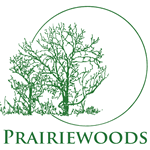 Many spiritual traditions recognize the rhythm of nature, human experience and divine spirit. In attuning to the rhythms of Earth, Esther de Waal writes in The Celtic Way of Prayer (p. 61–62):
Many spiritual traditions recognize the rhythm of nature, human experience and divine spirit. In attuning to the rhythms of Earth, Esther de Waal writes in The Celtic Way of Prayer (p. 61–62):
“A people who farmed and knew the patterns of the seasons, who lived close to the sea and watched the ebb and flow of tides, above all who watched the daily cycle of the sun and the changing path of the moon, brought all of this into their prayer.”
As we move into Fall, we are invited to hold together seemingly contrasting energies: vibrant color and stark dormancy, abundant harvest and barren landscape, dark and light, cold and warmth, death and rebirth. Spiritual author John Philip Newell cites in The Rebirthing of God (p. 60):
“We know that if we do not give ourselves over to the darkness and dreaming of nighttime, entering its intimate invitation to sleep and rest, we will be only half awake to the demands and creativity of the day. Yet … we forget the natural patterns that we are part of. Or we pretend that we can be deeply engaged and productive while pushing ourselves and others in ways that are antithetical to the essential rhythms of Earth’s cycles and seasons.”
Fall embodies nature’s spiritual discipline: letting go and waiting. We begin to balance—being and doing, inner awareness and outward engagement—which leads us to living life as fully and as relationally as possible. Or as Newell says, “to experience the Sacred at the heart of life in ways that will shape how we live and undergird how we work to heal the world” (p. 64).
How and what can we “let fall” so that we can move into the landscape of inner reflection? This involves letting fall the over-stimulation of the ego—our individual and collective ego—the ego of our religious tradition as the one true religion, or our sports team as the best, or our family as any more or less dysfunctional than another, or our nation mightier than another, or our human species as dominant over the myriad other species … All of these manifestations of over-stimulated “ego” (and more!) define us in terms of separation, one over another, creating within and around us more dualism and defensiveness rather than unity and compassion.
How might we use this time of fall to dig deep into the foundations of our being, to examine our inner life—how we identify ourselves not in terms of political party, religion, race, social status, sexual orientation … rather, by the very ground of our being?
Returning to the innermost ground invites us to those certain parts of ourselves that separate us from our true self. As we release the shallow, superficial aspects that seemingly identify us, a deeper, more qualitative sense of SELF emerges.
Time: How can we make productive use of solitude during the season of fall? How might we create a stable foundation of presence—presence to oneself while also recognizing the presence of other people, the land, plants, elements, animals … that assure us that we are not alone? Spiritual author David Benner in his book Presence and Encounter notes:
“This is one of the main potential gifts that can come from a silent retreat. Stripped of the distractions, those who survive the first couple of days of silence invariably begin to awaken to powerful, previously unnoticed forms of presence.”
Letting fall, people begin to notice the LIFE that had been present to them all along. They awaken! And begin to live in the NOW, rather than in the past or future. It frees!
One doesn’t have to attend a silent retreat to practice this. Often as the land lies fallow, we are invited inward and, sometimes, we experience absence. We try to fill time with meaningless forms of presence: shopping, screen time, busyness, procrastination, expectations, resistance … These can perpetuate the cycle of hopelessness, fear, anxiety … and diminish the chance for meaningful relationship, possibility and transformation within ourselves and within our relationships. If we are to live as truly and fully as we possibly can, we must develop the capacity to embrace absence.
Resist Resistance: How might we develop a spiritual practice of noticing our resistance? Can we relax into the moment and notice, grow curious about the energy that we are resisting? Push through. Grin and bear it. Attend a gathering and then complain or gossip our way through it … We sometimes try to work harder in defiance, hoping to overcome our resistance.
Instead, could we pause? Note the emotions attached to our resistance. What is the source of the resistance? Unmet needs? Forgiveness for a hurt? Deep fatigue? In identifying the source, and honoring and validating the feelings attached, we might ease our way through “either/or mentality” to both/and curiosity.
Can we let fall anything that prevents us from openness and trust? Recently, a scripture scholar who specializes in the psalms unpacked a familiar line, Psalm 46:10: “Be still, and know that I am God.” She mentioned that many people may find this Greek translation an invitation of simplicity and ease. The scholar suggested the value of the Hebrew translation. The Hebrew word for “still” is raphah, meaning to “sink down, relax, cease striving or withdraw.” Be still comes from a Hebrew term that means “that which is slack, to drop, to be vulnerable.”
The scholar cited the deeper challenge in the Hebrew translation: “You’ve been holding onto something for far too long. Let it fall.” So which is it, the Greek translation or the Hebrew? our dualistic mindset asks. Practicing unitive curiosity, we explore: Why not combine both translations of Psalm 46:10!
You’ve been holding onto something for far too long.
Be still.
Let it fall.
Know that I am God.
This powerful invitation urges us to stop clinging to what we perceive gives us a sense of identity, safety and security, and invites us to reflect on what opens or closes our body, mind and spirit … to discern what is healthy and unhealthy, growth-producing and growth-inhibiting.
“Be still.” This phrase supports us to stop our striving, to cease our efforts and to rest in the presence of the Source of All Being. It is a call to quiet in mind and heart, making space for Spirit to speak and work in our lives. The more we can enter into reflection and deeper awareness, the more profound peace, freedom and contentment we experience, allowing ourself to feel through the pleasure and the pain, and to move beyond them.
Perhaps as we enter into the autumn season, we can simply still ourselves and ponder, “What have I been holding onto for far too long?” And then, like the magnificent and vibrant trees, let it fall!
Poet Mary Oliver (1935–2019) wrote about “letting fall” in her poem “Song for Autumn.”
Song for Autumn
Don’t you imagine the leaves dream now
how comfortable it will be to touch
the earth instead of the
nothingness of the air and the endless
freshets of wind? And don’t you think
the trees, especially those with
mossy hollows, are beginning to look for
the birds that will come—six, a dozen—to sleep
inside their bodies? And don’t you hear
the goldenrod whispering goodbye,
the everlasting being crowned with the first
tuffets of snow? The pond
stiffens and the white field over which
the fox runs so quickly brings out
its long blue shadows. The wind wags
its many tails. And in the evening
the piled firewood shifts a little,
longing to be on its way.
—Ann Jackson, PBVM
image by Lydia Bridges


